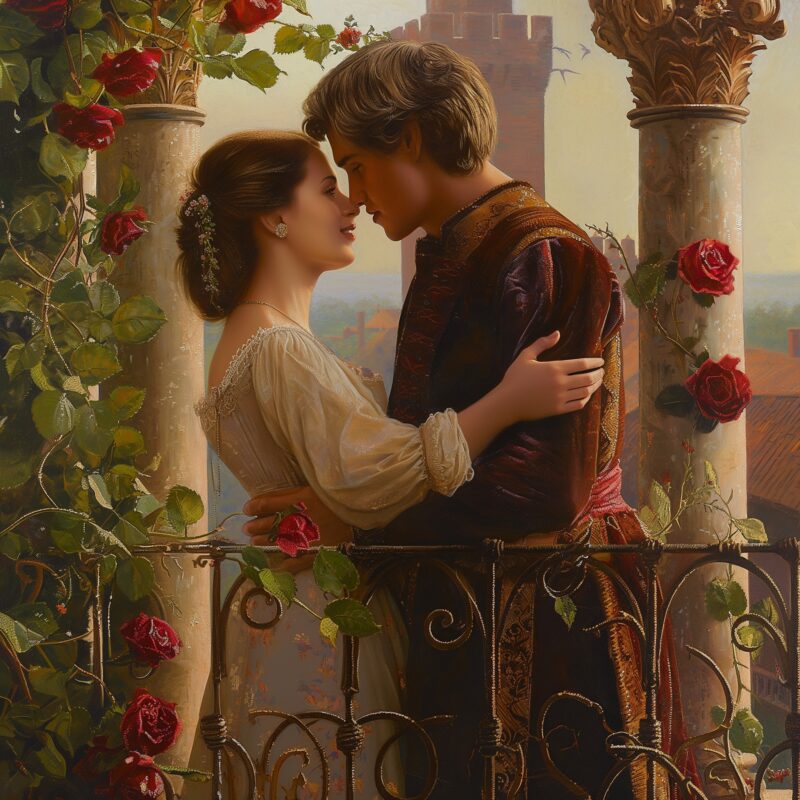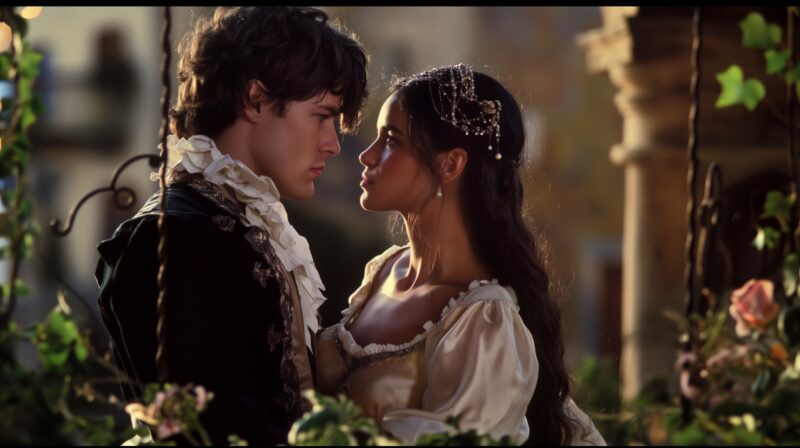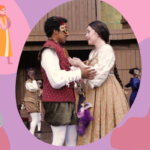“Romeo and Juliet,” one of William Shakespeare’s most famous plays, holds a significant place in literary history.
Its timeless tale of love and tragedy has captivated audiences for centuries.
However, the exact date of its composition remains a topic of scholarly debate.
Let us say what we know about it today.
Estimated Dates of Composition

Scholars estimate that “Romeo and Juliet” was composed between 1591 and 1595, based on various stylistic elements and historical clues.
During this period, Shakespeare’s writing exhibited a maturity and complexity that aligns with the play’s intricate characterizations and poetic dialogue.
Several specific events may have influenced the writing of “Romeo and Juliet.”
One notable event is the death of Shakespeare’s son, Hamnet, in 1596.
Although this occurred after the estimated composition period, the themes of youthful demise and parental grief in the play resonate with Shakespeare’s personal loss.
Another significant event is the earthquake mentioned in the play, which has a historical counterpart in 1580.
The earthquake, referenced by the Nurse in Act 1, Scene 3, would have been a vivid memory for Londoners and likely served as a contemporary reference point for Shakespeare’s audience.
These elements, combined with stylistic analysis, support the theory that “Romeo and Juliet” was written in the early 1590s.
The play’s intricate interplay of comedy and tragedy, along with its exploration of intense, youthful emotion, marks it as a work from this vibrant period of Shakespeare’s career.
Early Performances and Publication
“Romeo and Juliet” was likely first performed by the Lord Chamberlain’s Men around 1595-1596. This theatrical troupe, which included Shakespeare as a member, was one of the most prominent in London at the time.
The play’s initial performances would have taken place at The Theatre or The Curtain, popular venues for the Lord Chamberlain’s Men before they moved to the Globe Theatre in 1599.
The publication history of “Romeo and Juliet” provides further insight into its early reception and textual development.
The First Quarto, printed in 1597, is often considered an incomplete and corrupt version of the play. “Bad quarto” likely resulted from memorial reconstruction by actors or audience members, leading to significant textual variations and omissions.
The Second Quarto, published in 1599, is regarded as the more accurate version. It offers a more complete and polished text, likely based on Shakespeare’s manuscript or a prompt book used in performances. The differences between the quartos highlight the challenges of early modern play publication and the evolving nature of Shakespeare’s works.
These early performances and publications underscore the immediate impact “Romeo and Juliet” had on audiences and its enduring legacy in the canon of English literature.

Sources and Influences
The story of “Romeo and Juliet” did not originate with Shakespeare. Its roots trace back to several earlier works, each contributing to the tale’s evolution. Dante’s “Divine Comedy,” written in 1298, contains the earliest hints of the story’s themes of tragic love and family conflict, though it does not include characters resembling Romeo and Julie.
Luigi da Porto’s novella, penned in 1530, is one of the first versions to closely resemble Shakespeare’s play. Da Porto’s tale of star-crossed lovers from feuding families in Verona set the groundwork for future adaptations. Matteo Bandello’s 1554 version further refined the story, adding more detail and dramatic elements.
Arthur Brooke’s poem “The Tragicall Historye of Romeus and Juliet,” written in 1562, brought the story into English literature. Brooke’s poem, while more verbose and moralistic, laid the structural foundation for Shakespeare’s play.
Finally, William Painter’s “The Palace of Pleasure” (1567) included a prose version of the tale, making the story accessible to a wider audience. These sources collectively shaped the narrative that Shakespeare would eventually craft into “Romeo and Juliet.”
As a big Shakespeare fan, I’m eager to see the upcoming festivals in the U.S. this year!







